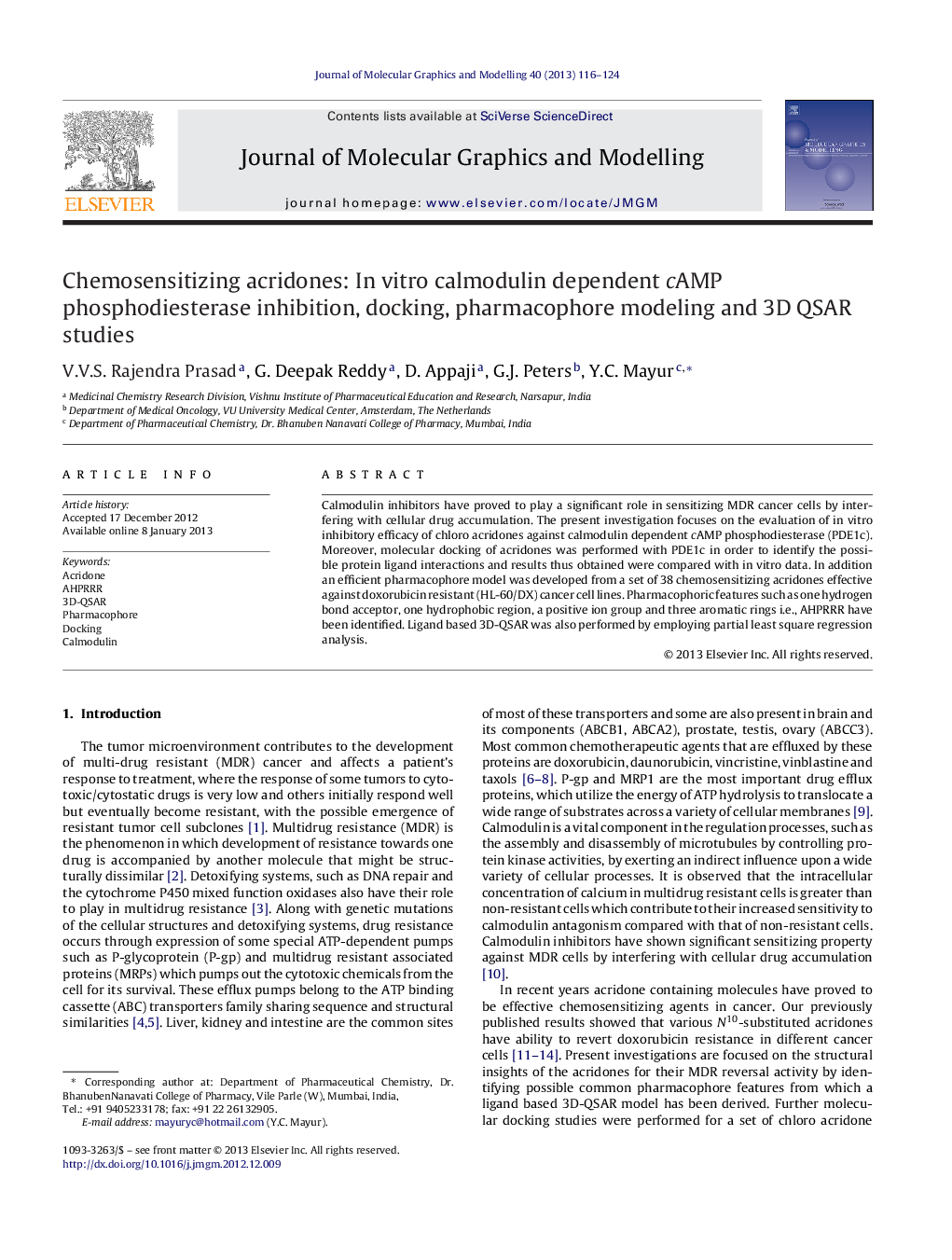| Article ID | Journal | Published Year | Pages | File Type |
|---|---|---|---|---|
| 443407 | Journal of Molecular Graphics and Modelling | 2013 | 9 Pages |
Calmodulin inhibitors have proved to play a significant role in sensitizing MDR cancer cells by interfering with cellular drug accumulation. The present investigation focuses on the evaluation of in vitro inhibitory efficacy of chloro acridones against calmodulin dependent cAMP phosphodiesterase (PDE1c). Moreover, molecular docking of acridones was performed with PDE1c in order to identify the possible protein ligand interactions and results thus obtained were compared with in vitro data. In addition an efficient pharmacophore model was developed from a set of 38 chemosensitizing acridones effective against doxorubicin resistant (HL-60/DX) cancer cell lines. Pharmacophoric features such as one hydrogen bond acceptor, one hydrophobic region, a positive ion group and three aromatic rings i.e., AHPRRR have been identified. Ligand based 3D-QSAR was also performed by employing partial least square regression analysis.
Graphical abstractIn silico investigations show that the nitrogen containing substituent (yellow circle) plays a vital role in the biological activity for these compounds.Figure optionsDownload full-size imageDownload high-quality image (230 K)Download as PowerPoint slideHighlights► In vitro inhibition of calmodulin dependent cAMP phosphodiesterase was performed. ► Performed docking studies with cAMP phosphodiesterase and compared with in vitro data. ► Pharmacophore modeling has been performed for a set of 38 chemosensitizing acridones. ► QSAR modeling was performed for all obtained common pharmacophore hypotheses. ► AHPRRR.518 was the best obtained hypothesis with R2 of 0.98 and Q2 of 0.86.
